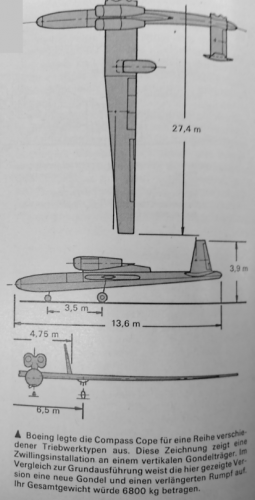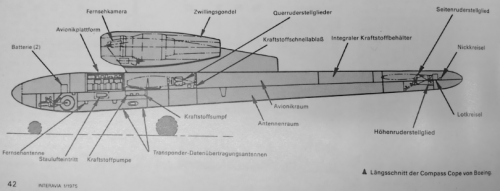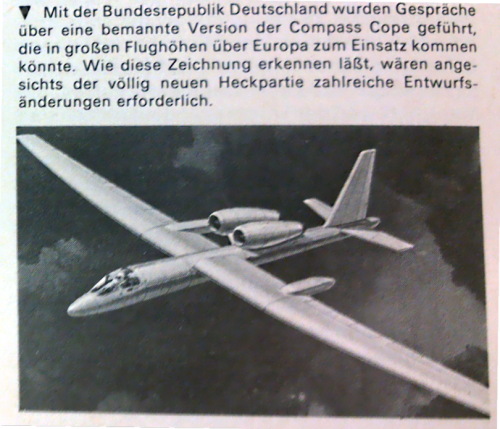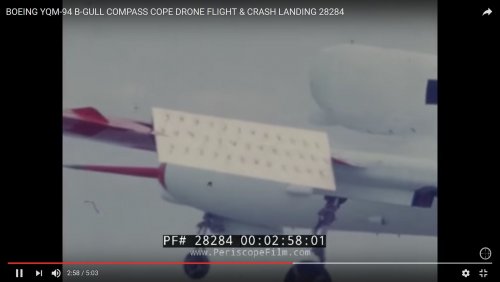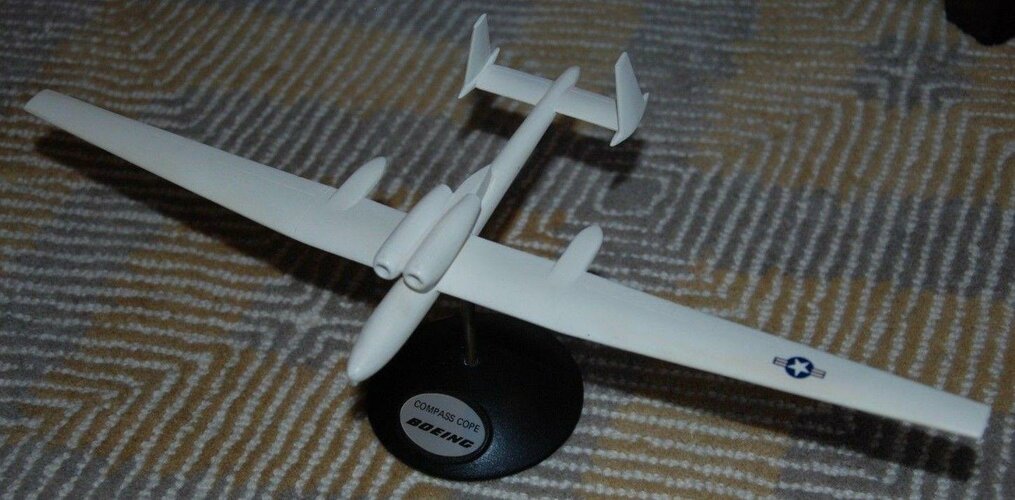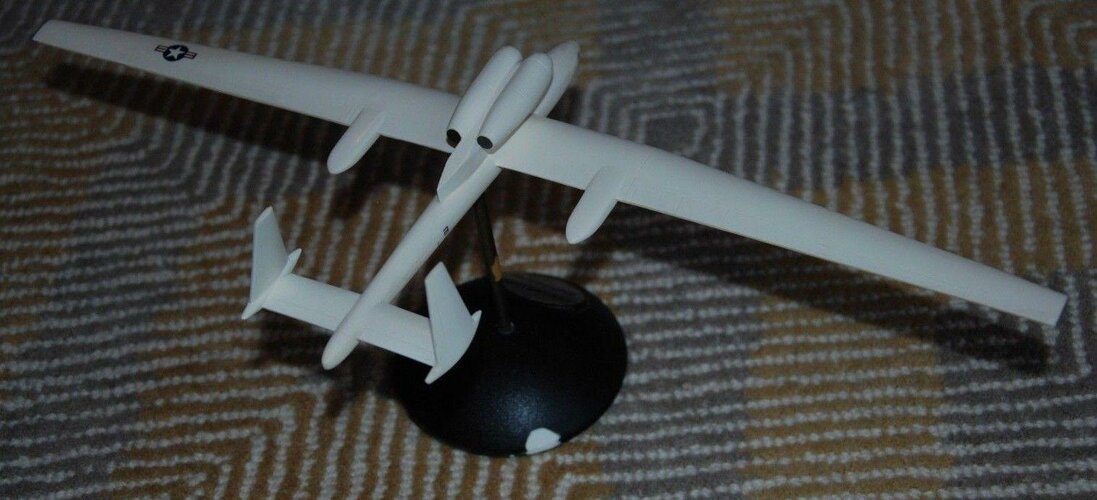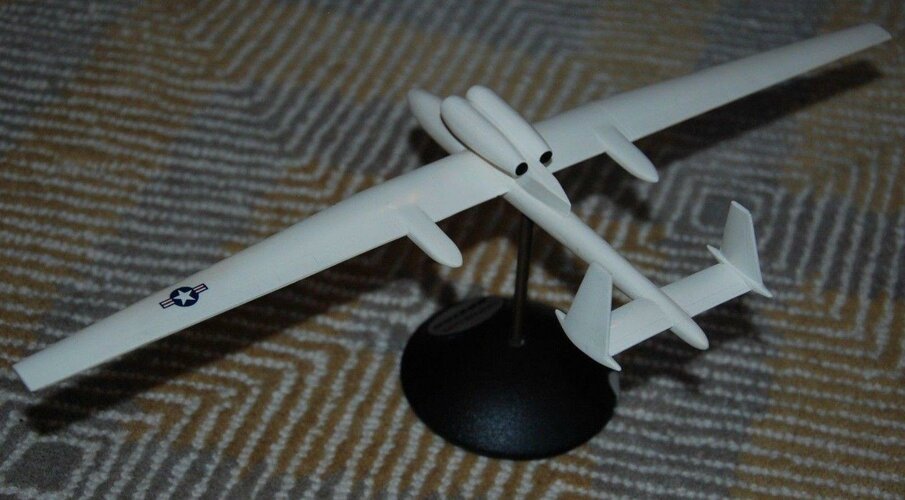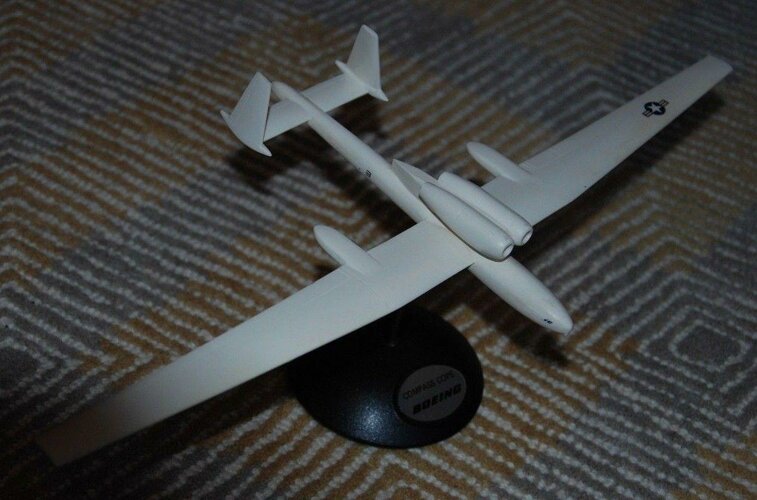Video description:
This silent film from August 4, 1973 shows the second flight of Boeing's prototype "Compass Cope" drone, which unfortunately ended in disaster when the aircraft made a hard landing (read more below including the cause of the accident). The Boeing YQM-94 B-Gull (also called Compass Cope B) was a developmental aerial reconnaissance drone developed by Boeing. It could take off and land from a runway like a manned aircraft, and operate at high altitudes for up to 24 hours to perform aerial surveillance, communications relay, or atmospheric sampling.
Compass Cope was a program initiated by the United States Air Force (USAF) in 1971 to develop an upgraded reconnaissance drone that could take off and land from a runway like a manned aircraft, and operate at high altitudes for up to 24 hours to perform surveillance, communications relay, or atmospheric sampling. Two aircraft, the Boeing YQM-94 Compass Cope B, and the Ryan Aeronautical YQM-98A Compass Cope R participated in the program.
The Boeing YQM-94A is a cantilever shoulder-wing monoplane, basically a jet-powered sailplane, with long straight wings, a twin fin tail, retractable tricycle landing gear, and a turbojet housed in a pod on its back. The engine was a General Electric YJ97-GE-100 providing 5,270 lb (2,390 kg) thrust. The YQM-94A was constructed using aluminium and fiberglass. The lower half of the circular-section fuselage was glass-fibre honeycomb, the same material used for radomes. The wings of the YQM-94A were constructed of aluminium-skinned honeycomb with a fiberglass core which insulated the fuel tanks from the cold encountered at the altitudes it was flown.
Since the YQM-94A was a demonstrator, it used some off-the-shelf components to reduce costs. The datalink was based on the AN/TPW-2A X-band radar. The flight control system was derived from a system developed by the Sperry Corporation for the Beechcraft QU-22B Pave Eagle. The Compass Cope B was controlled remotely from the ground with no autonomous guidance capability. A television camera in the nose allowed it to be remotely flown by a ground-based pilot. The undercarriage for the YQN-94B came from a Rockwell Commander. The YQM-94's fuselage sits lower than the Rockwell Commander, so Boeing used this as a lift-dumping system. As the aircraft settled down on its specially strengthened nose wheel, the wing was placed in a negative angle of attack.
The remote control system was tested using a Cessna 172 aircraft over a ten-month period. Initial flight of the first YQM-94A demonstrator (seen in this film) was on 28 July 1973, at Edwards Air Force Base. This aircraft crashed on its second flight on 4 August 1973. The prototype was lost because a damaged piece of mylar insulation caused an electrical short-circuit in a rudder accelerometer. The erroneous signals generated by this accelerometer caused random rudder movements. This problem was compounded by an erroneous airspeed indication for the ground pilot and a control problem because the left wing was heavier than it should have been. These problems resulted in a hard landing which caused irreparable damage to the first prototype.
The second demonstrator performed its first flight on 2 November 1974, and completed the evaluation program. Later tests of this aircraft included a successful endurance flight of 17 hours 24 minutes at altitudes of more than 55,000 feet (16,800 m). This aircraft was retired to the National Museum of the United States Air Force in September 1979.
Ryan's entry into the competition was an updated variant of the Model 154 / AQM-91 Firefly, which it called the Model 235. Initial flight of the first Compass Cope R demonstrator was in August 1974. However, the Boeing Compass Cope B won the competition in August 1976 on the basis of lower cost, with the company awarded a contract to build preproduction prototypes of the YQM-94B operational UAV. Since the evaluation of the Compass Cope prototypes had shown the Ryan YQM-98 to be superior to the Boeing YQM-94A in some respects, Ryan challenged the award. It did no good, since the entire Compass Cope program was cancelled in July 1977, apparently because of difficulties in developing sensor payloads for the aircraft.
We encourage viewers to add comments and, especially, to provide additional information about our videos by adding a comment! See something interesting? Tell people what it is and what they can see by writing something for example: "01:00:12:00 -- President Roosevelt is seen meeting with Winston Churchill at the Quebec Conference."
This film is part of the Periscope Film LLC archive, one of the largest historic military, transportation, and aviation stock footage collections in the USA. Entirely film backed, this material is available for licensing in 24p HD, 2k and 4k. For more information visit http://www.PeriscopeFilm.com

